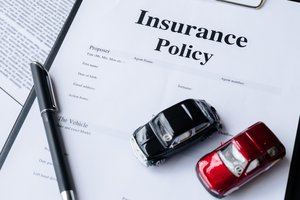
Many people do not understand what type of insurance they have on their cars or trucks. They usually just shop around with different insurance companies and buy the cheapest policy without realizing what they are getting or what they really need. In this blog, I will talk about the different types of coverage in a standard Texas automobile insurance policy.
Liability coverage
Liability insurance pays for damage you cause to others in an accident involving your automobile, NOT damages to you. It covers not only you as a driver, but also anyone else operating your car with your permission. In Texas, the law requires all drivers maintain liability insurance with minimum liability limits of $30,000 per person for bodily injury, $60,000 per accident for bodily injury, and $25,000 per accident for property damage (30/60/25). What does this mean? It means that if caused the collision, you have insurance that will pay up to $30,000 in bodily injury for each person with a cap of $60,000 for the accident, and up to $25,000 for property damage. However, it does not cover damages to you. In those cases, you need to have additional insurance.
You should also think about increasing the limits on your insurance. In today’s dollars, $30,000 is not much money if someone is seriously injured in an accident. What if you are involved in an accident, you are at fault, and the other person is seriously injured? Medical expenses for a serious injury can easily be more than $100,000. If you have any doubt, talk to a family member or friend who was hospitalized recently. Medical costs are very high. If you do not have adequate insurance to cover their damages and they are able to prove you are at fault, then they can come after you for those amounts more than the insurance available. That means your hard-earned money could be at stake.
Collision coverage
For those driving newer cars or cars that are financed, you probably already have collision coverage. It will pay for the cost of repairing or replacing your car if damaged by an impact with a vehicle or object. Some people will drop this coverage after their car loan has been paid off but think long and hard about dropping this coverage as paying for car repairs out of your own pocket can be quite expensive. If in doubt, call your local body shop and ask for a quote on replacing the bumper on your car, which is the primary damage in a minor collision. Imagine a wreck where the damage is worse. You could be shopping for a new car without the ability to pay for the repairs to your old car.
Comprehensive coverage
This covers damage to the insured’s car not involving a collision with another car (including damage from fire, explosions, vandalism) and theft. For those who lived in Texas during a hailstorm, you are familiar with this coverage. It also is the coverage that will pay for your vehicle if your car is stolen.
Personal Injury Protection (PIP) coverage
It is mandatory for insurance companies to provide PIP coverage unless you specifically reject it in writing. This portion of the policy will pay, up to the limits, for medical bills and lost wages if you are in a collision, no matter who is at fault.
Medical Payments (MedPay) coverage
This coverage reimburses you up to the limits for medical or funeral expenses because of bodily injury or death by accident, again no matter who is at fault. Unlike PIP, if you end up recovering money from a third party for your damages, the insurance company can require you to pay back any payments unless your policy has a non-subrogation provision. Most don't have that provision.
Uninsured/Underinsured motorist
Like PIP, it is mandatory in Texas for insurance companies to provide UM/UIM coverage unless you specifically reject the coverage in writing. For further information on the importance of UM/UIM coverage, see my previous blog post here.
Towing and labor coverage
This pays to tow your car if it can’t be driven following a collision.
Rental reimbursement coverage
This pays for you to rent a car if your car is stolen or being repaired following a collision.
Umbrella/Excess Insurance
This is additional insurance beyond your automobile liability coverage. An umbrella or excess insurance is intended to pay once your primary policy has paid all its limits of coverage. It is the safety net for serious injuries. It is much cheaper than your primary insurance policy. While it applies to losses over the dollar amount in the underlying policies, terms of coverage are sometimes broader than those of underlying policies. Let’s assume you are injured in a car accident and your medical bills exceed $100,000. The other driver only has a primary policy of $50,000 per person limits. However, what you don’t realize is that he also has a $100,000 excess policy that would pay for those expenses beyond the initial $50,000. Most times the insurance company will not let you know about the other insurance policies available to pay your claim. This is what an experienced attorney will ensure—that all available insurance coverage is found to ensure you can be fairly compensated for your injuries.
So, pull out your insurance policy and review it. If your coverage is inadequate, call your insurance agent. Make sure that you not only have the coverage needed to protect you in an accident, but also make sure the limits of coverage are sufficient to protect you and your family if a serious accident should occur.
If you were in a collision where another person injured you, contact us online or call us at 817-500-0990 for a free consultation to discuss your options.
